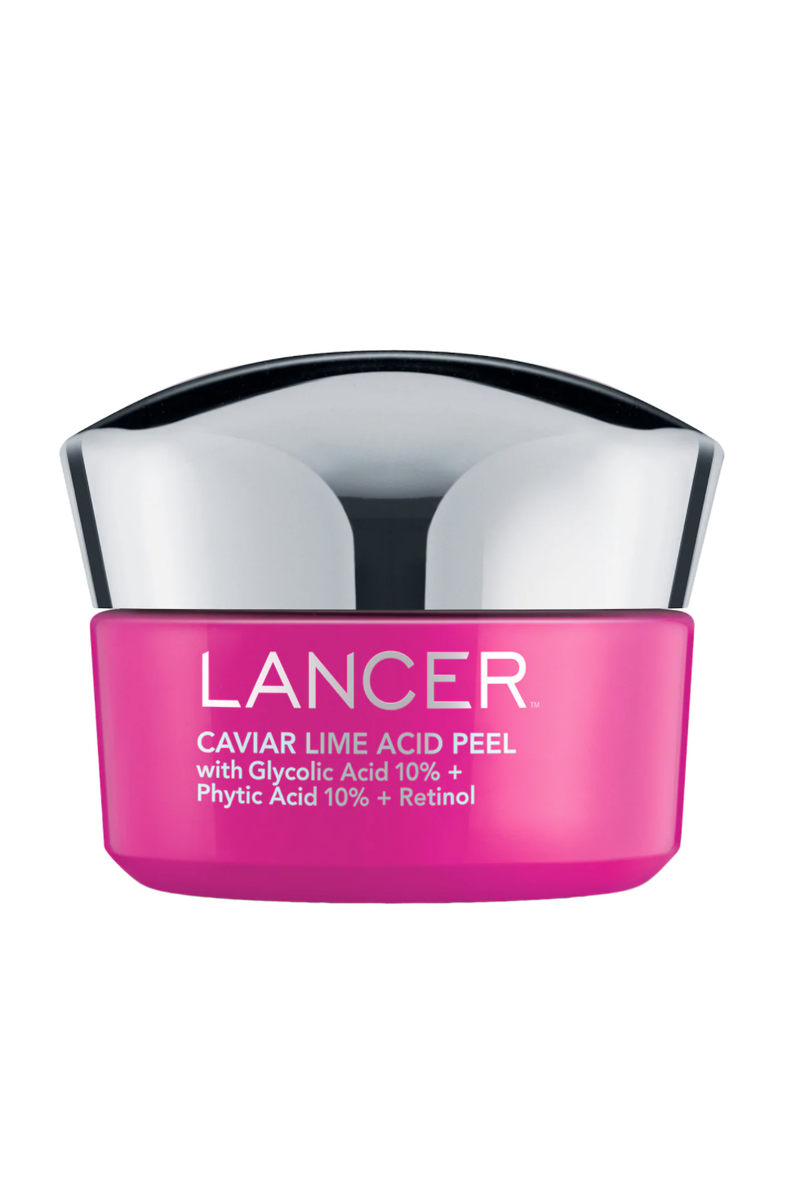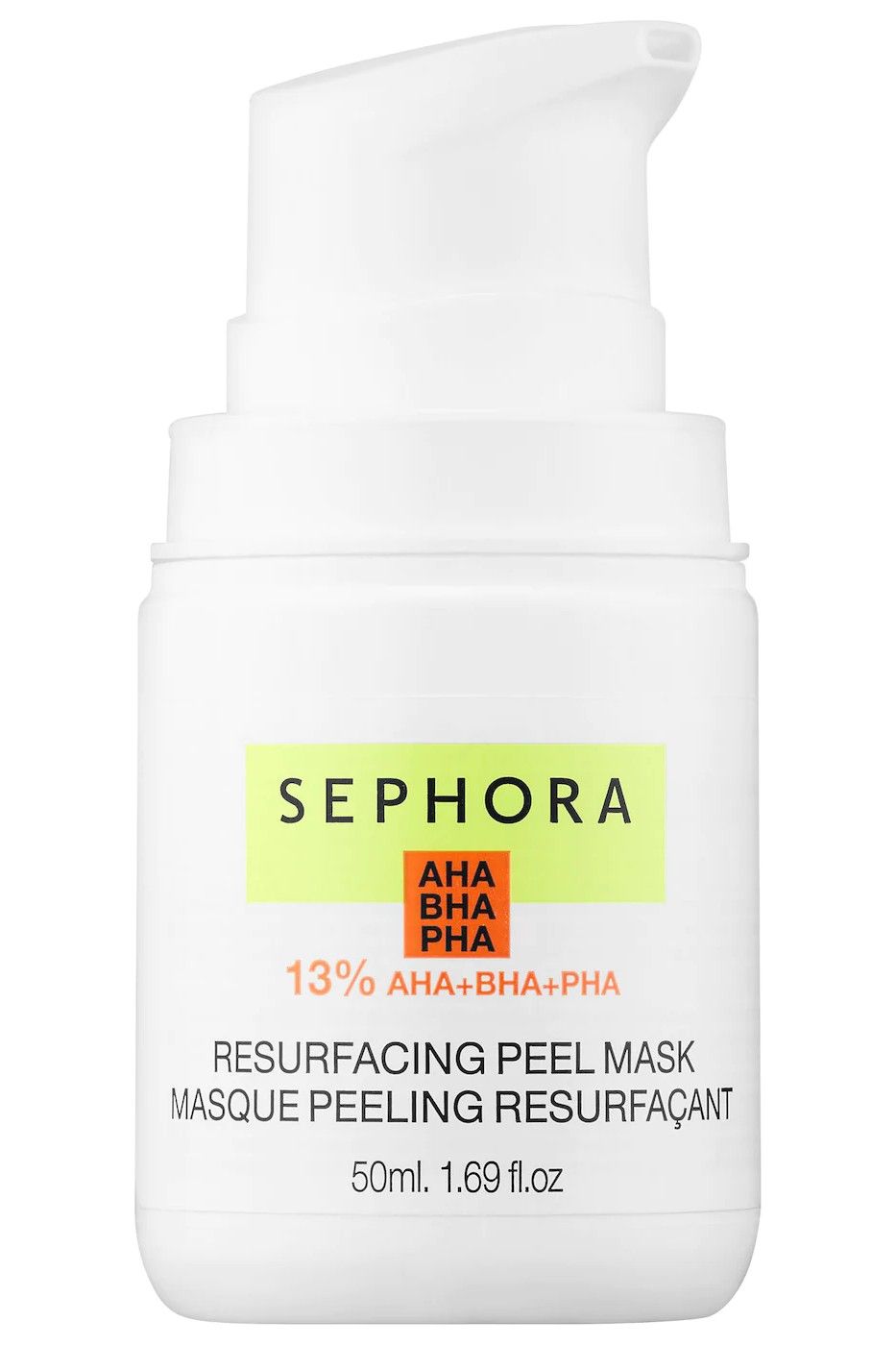

Celebrity news, beauty, fashion advice, and fascinating features, delivered straight to your inbox!
Thank you for signing up to . You will receive a verification email shortly.
There was a problem. Please refresh the page and try again.
Some treatments are best left to the pros—and an intense chemical peel with glycolic, lactic, or salicylic acid is most definitely one of them. Don’t test your fate (or face) with at-home experiments, people. But, that’s not to say the best chemical exfoliators won’t give you the same glow-boosting, skin-evening benefits via a safer medium. The best at-home chemical peels are going to be *much* gentler, won’t require down time, and will typically be delivered through peel pad, serum-like liquid, or wash-off formula. Granted, it may take a bit longer to notice a smoother texture of faded dark spots, but believe us when we say that incorporating one into your routine is 100 percent worth it in the long run.
To get the answers to all of your chemical peel questions and shop for the safest at-home options, keep scrolling.
What Is a Chemical Peel?
Chemical peels vary in strength and ingredients, but most aim to deeply exfoliate the skin to reduce fine lines and wrinkles, improve brightness, and lift away unwanted discoloration and brown spots.
How Does a Professional Chemical Peel Differ From an At-Home Chemical Peel?
At-home chemical peels formulas have lower concentrations of acids (read: glycolic, lactic, salicylic), making them safer for at-home use. "In-office peels have stronger concentrations of acids, meaning greater immediate results," says Dr. Dendy Engelman, a board-certified dermatologist in New York City. "These need to be administered by a licensed practitioner, because of the potential to burn or irritate the skin," she says.
What to Look for in a Chemical Peel
When choosing a DIY peel, it's smart to consider your skin type, says Dr. Engelman. "Look at the acids in the peel, and make sure they target the issue you are trying to remedy." For example, someone with acne-prone skin might want to seek out a salicylic acid peel, while someone with sensitive skin looking to target hyperpigmentation is better suited with glycolic acid.
Is an At-Home Chemical Peel Safe?
Let us preface this by saying that using a professional-grade product at home is unsafe—those high intensity acid should *only* be used by doctors. “Due to a wave of how-to YouTube videos and consumer accessibility to professional products through vendors like Amazon, I am seeing more and more instances of serious damage done to skin—all in a patient's own bathroom," says Dr. Dennis Gross, board-certified dermatologist and founder of Dr. Dennis Gross Skincare. "Higher concentrations of acid must be administered by a licensed professional; they can damage skin if they're not neutralized properly."
That said, using a peel pad, mask, or serum that is specifically designed for at-home use is a-ok. The Cosmetic Ingredient Review Expert Panel recommends that companies use glycolic and lactic alpha-hydroxy acids in concentrations of 10 percent or less, in solutions with a pH of 3.5 or greater, when formulating consumer products.
How Often Should I Use an At-Home Chemical Peel?
"The biggest challenge is to not overwork the skin," says Dr. Engelman. “Excessive exfoliation will expose skin, weaken skin-barrier function and trigger inflammation. If the barrier function is damaged, skin becomes vulnerable to infection from microorganisms, such as bacteria and fungus, and leads to sensitivity and irritation."
As a rule of thumb, start out slow. Use an at-home chemical peel once a week or once every other week to see how your skin tolerates it. Some products are super gentle and safe for every other day use, while others should only be used once every few weeks. (Editor's note: If you decide to use an at-home chemical peel, it’s even more important to use one of the best sunscreen products, as they can make skin extra sensitive to the sun.)
The Best At-Home Chemical Peels

Chances are, you've seen this peel pad before. It's everywhere, because it's really, truly the best of the best. It's packed with five different acids—a combination of AHAs and BHAs—to target concerns ranging from acne to dark spots and dry patches. It's a two-minute long application process that's well worth the investment.

Dull skin has nothing on this exfoliating face mask. The 10-minute fix is a radiance-boosting-dead-skin-sloughing-glow-giving miracle worker. It’s packed with gentle AHAs as well as the brand's trademark Viniferene, which is ideal for reducing the look of dark spots. While this mask does come along with some crazy good results, we don’t recommend it for sensitive skin types.

With an AHA concentration of 5.1 percent and a pH value of 3.7, these are totally safe for at-home use according to the Cosmetic Ingredient Review Expert Panel. Thanks to a blend of glycolic acid, lactic acid, and citric acid, these babies help to minimize the look of pores, even skin tone, and brighten—the trifecta. One callout: This is a wash off formula, so make sure you wash your face with water after five to 10 minutes.

Let’s preface this by saying that having bumps and rough patches is a completely normal part of being human. If you do want to smooth out some of that texture though, there’s no better product than this one. In addition to glycolic acid, this formula includes retinol and niacinamide, two ingredients that speed up cell turnover and help even skin texture and tone. So without further ado, start using this two to three times a week.

If you’re ready to pull out the big guns in the name of glow, this product is the way to go. It features both physical and chemical exfoliants, so rest assured your skin will be left looking radiant. While most of the peels on this list have glycolic acid as the star ingredient, this one features salicylic acid, making it a great option for those with acne.

I’m the first to admit that the thought of a peel on my sensitive skin is slightly terrifying. But trust me when I say that this gentle pad doesn’t irritate my face. In fact, I can use the lactic acid treatment five times per week without experiencing extra redness or stinging. I also love that the formula doesn’t have to be washed off—it’s just an added step in my nighttime routine.

Unassuming? Yes. Highly effective? You better believe it. Derived entirely from fruits and vegetables, the acids here tend to be gentler for first-time peelers. Papaya and pineapple's naturally occurring enzymatic alpha hydroxy acid is tempered by the protective qualities in pumpkin, which is rich in beta-carotene, vitamins A, C, zinc, and potassium.

Dr. Englemen says that a peel that contains BHAs, like this 10-minute berry-hued option, is ideal for treating acne. "BHAs, like salicylic and beta hydroxy, are best for issues like large pores, blackheads and pimples," she explains. "These acids have keratin-dissolving properties that can breakdown dead skin cell build-up and decongest pores."

If chemical peels can leave you raw and red, this little bottle might be just the solution. Shake it up to blend the two liquids: A heavy-duty combo of glycolic, lactic, and malic acids that loosen the bonds of dead cells to clarify skin, and a soothing elixir of antioxidant holy basil and omega-rich jojoba seed oil to calm the acid's effects.

This bi-phase elixir offers two benefits. The pinky layer is a potent glycolic acid blend to slough away dead skin cells. The golden layer? Nourishing argan oil. As a result, this product is gentle enough for daily use.

In some regards, these fan-favorite peel pads from Bliss—and their whopping 1,200 Amazon reviews—are rather simple. Ten percent glycolic acid time-releases overnight, targeting fine lines, dark marks, and blemishes. It's a particularly well-tolerated formulation thanks to the addition of witch hazel, licorice and calendula flower, which quell inflammation.

The latest from Obagi—a professional brand—does not mess around. Three acids (glycolic, salicylic, lactic) combine for one of the strongest and safest exfoliating treatments you can get over-the-counter.

This 30 percent concentrate of glycolic acid only stays on for two minutes and is especially beloved by those who suffer from acne, acne scars, or melasma. This peel is on the stronger side, so don't leave it on longer than instructed and avoid it if you have sensitive skin.

Salicylic and glycolic acids target acne breakouts in one measly minute, and this formula has calming effects built right in. Chamomile works to stifle the standard redness most peels bring on.

A one-two-three punch of glycolic, salicylic and lactic acid provides exfoliation, brightening, and cell turnover for a fresh and renewed complexion. Simply swipe this pad along your face and décolletage and allow it to dry fully before layering on your nightly products. The triple-acid blend is gentle enough to linger on your skin and keep working overnight.

While this potent liquid is well suited for stubborn lines, twenty-somethings can still achieve radiance and a healthy glow from its lactic and glycolic acids.

Come on, it doesn't get much simpler than a spray bottle. This peel is nourishing, too. It contains jojoba oil, grapefruit seed, and mugwort extract to treat skin while it exfoliates.

Supercharged with five different AHAs to target signs of aging on the surface and at deeper levels of the skin, this is strong enough to visibly brighten skin without irritating it. According to Dr. Engelman, AHAs like glycolic acid are ideal for anti-aging: "It's the smallest acid in particle size, meaning it is the most effective in breaking down cellular bonds to reveal new cells."

It might smell like an orchard, but don't underestimate this alpha and beta hydroxy acid formula. It'll help lift dark spots and discoloration cultivated from years of sun damage.

This pretty blue jar has more pumpkin enzymes than a Halloween gourd, and functions as a retinol-substitute if you're looking for a more natural exfoliation. And added lactic acid helps to clear congested pores for a smoother visage.

Caviar lime is naturally rich in AHAs, and when combined with retinol, makes for an ultra-brightening treatment that gives an airbrushed look to pores.

This facial peel will go to work when your head hits the pillow, so you'll wake up with glowy, healthy-looking skin. While you're in dreamland lactic acid, glycolic acid, and vitamin A come together to exfoliate, brighten, and hydrate, and ingredients like allantoin, rosehip, and vitamin E soothe the skin.

If you're looking to unclog your pores, take a peek at this peel. In just 10 minutes it'll not only remove buildup, but it'll smooth, brighten, and reduce the appearance of pores and wrinkles on your complexion.

Give your skin a boost while you catch some Z's with these peel pads. Swipe the dual-sided pad over your face, neck, and chest before you head to bed and wake up with smooth, glowing skin.

From dark spots and clogged pores to blemishes, fine lines, and wrinkles—this peel tackles all your concerns. The 13-percent AHA, BHA, and PHA mask works to give you a radiant glow.
If you’re interested in more professional-grade at-home treatments, check out our favorite LED masks, keratin treatments, and dermaplaning tools.

Samantha Holender is the Beauty Editor at Marie Claire, where she reports on the best new launches, dives into the science behind skincare, and keeps up with the latest trends in the beauty space. She has previously written for Us Weekly, Popsugar, Makeup.com, Skincare.com, and Philadelphia Wedding. Follow her on Instagram @samholender.
-
 How This Royal Lived Incognito for 13 Years
How This Royal Lived Incognito for 13 YearsThis is kinda crazy.
By Iris Goldsztajn
-
 Prince Harry May Well Come Back to the U.K. "In a New Role" When Charles Is King, His Former Protection Officer Says
Prince Harry May Well Come Back to the U.K. "In a New Role" When Charles Is King, His Former Protection Officer SaysCould you see this happening?
By Iris Goldsztajn
-
 Princess Anne Has a Pretty Unusual Food Preference, According to a Former Royal Footman
Princess Anne Has a Pretty Unusual Food Preference, According to a Former Royal FootmanSome might even call it...bananas.
By Iris Goldsztajn
-
 The 10 Best At-Home Gel Nail Kits of 2022
The 10 Best At-Home Gel Nail Kits of 2022Plus, expert tips for getting a salon-worthy set.
By Samantha Holender
-
 How to Minimize Your Pores, According to Dermatologists
How to Minimize Your Pores, According to DermatologistsSay goodbye to the gunk.
By Samantha Holender
-
 The 17 Best Sea Salt Sprays for Beach Waves
The 17 Best Sea Salt Sprays for Beach WavesPerfect vacation hair with these fake-it-'til-you-make-it products.
By Gabrielle Ulubay
-
 The 13 Best Acne Patches to Banish Pimples Fast
The 13 Best Acne Patches to Banish Pimples FastPop ‘em on any time of day.
By Samantha Holender
-
 Broken Capillaries on Your Face: The Expert Guide
Broken Capillaries on Your Face: The Expert GuideWhat to do about those pesky broken blood vessels on your face.
By Samantha Holender
-
 The 8 Best Bikini Trimmers in 2022
The 8 Best Bikini Trimmers in 2022Smooth sailing into swimsuit season.
By Julia Marzovilla
-
 How to Tint Your Eyebrows At Home
How to Tint Your Eyebrows At HomePractice makes perfect, people.
By Samantha Holender
-
 The 12 Best Razors for Women in 2022
The 12 Best Razors for Women in 2022No more razor bumps, that's for sure.
By Julia Marzovilla










